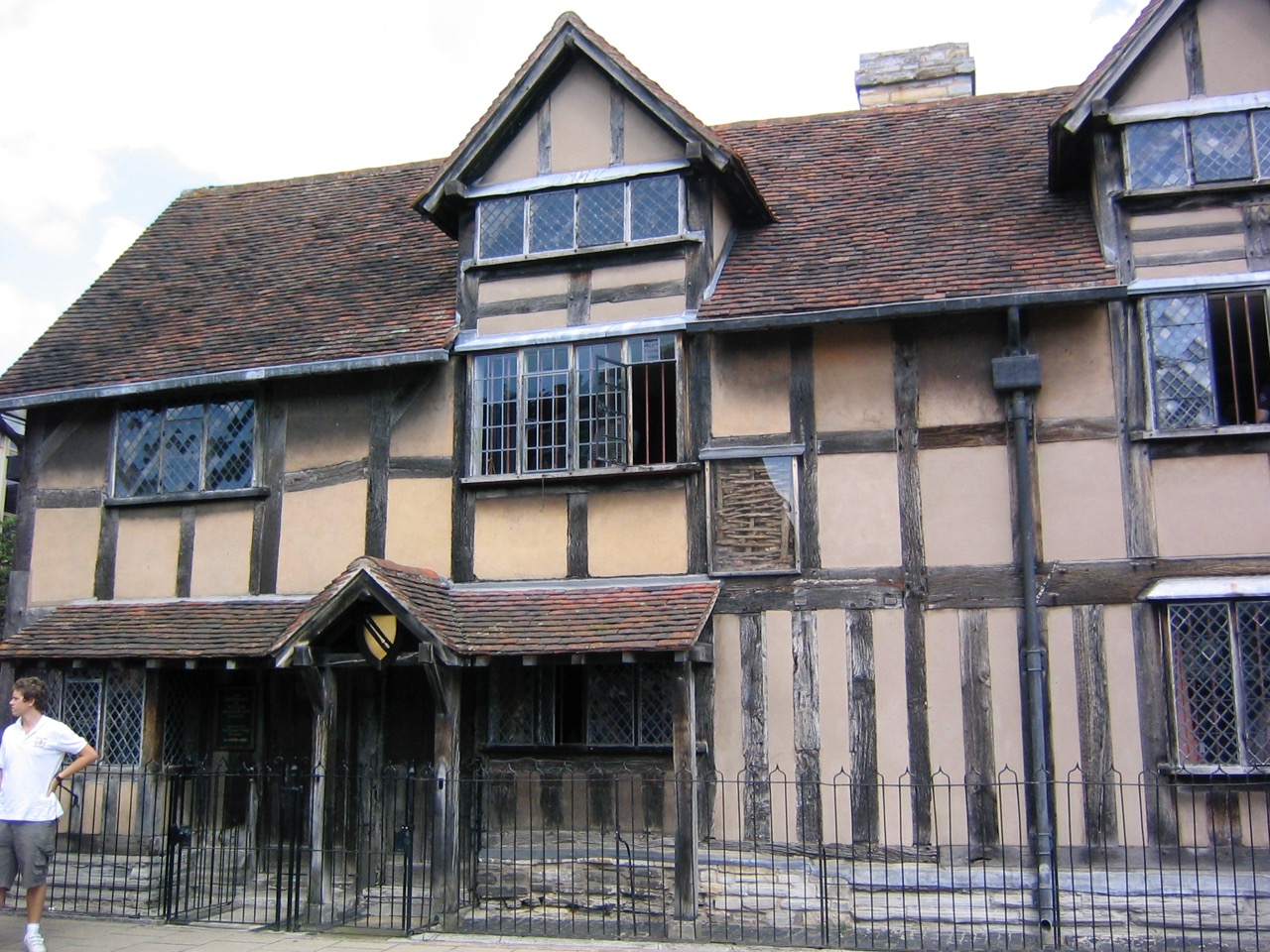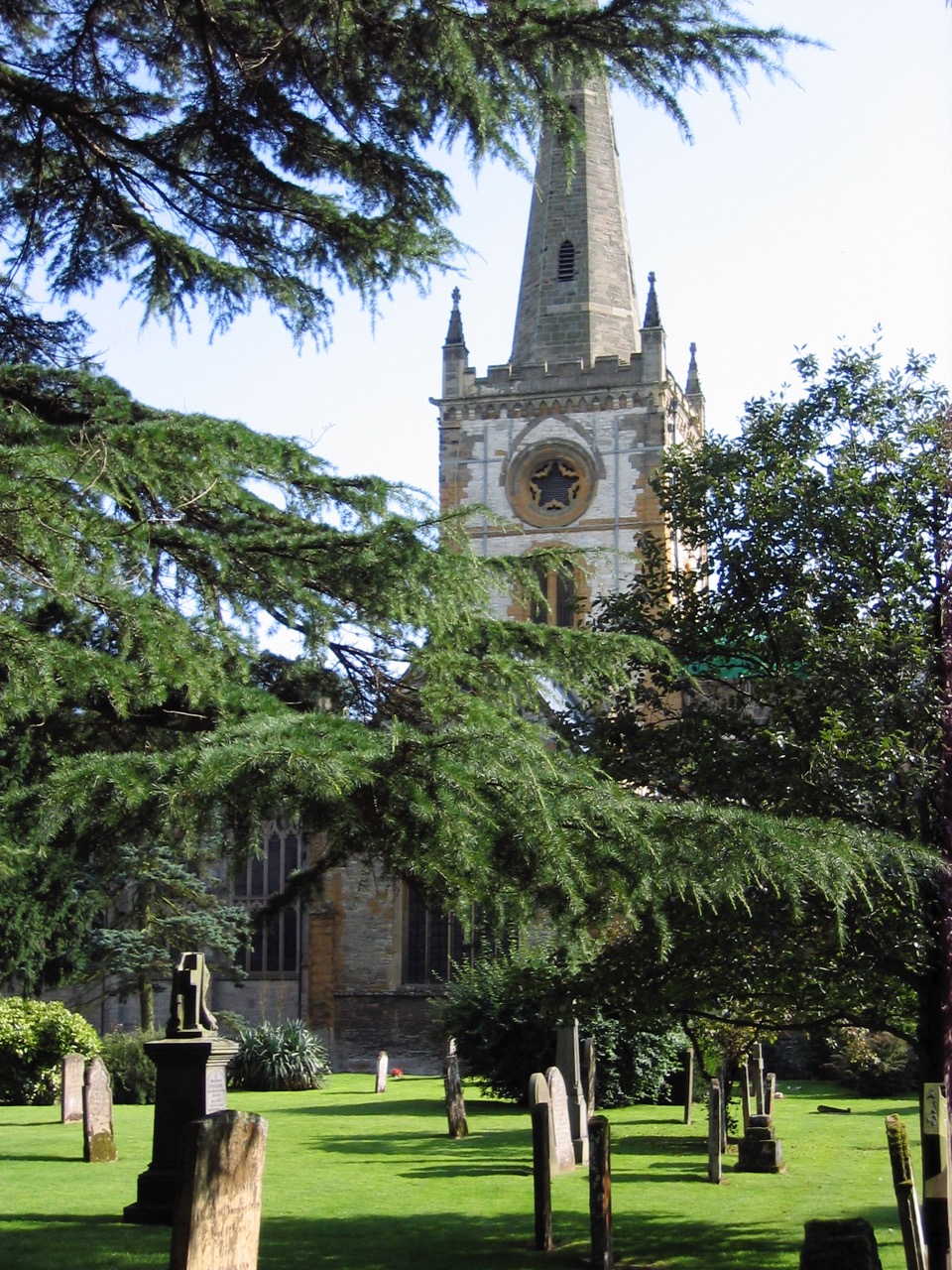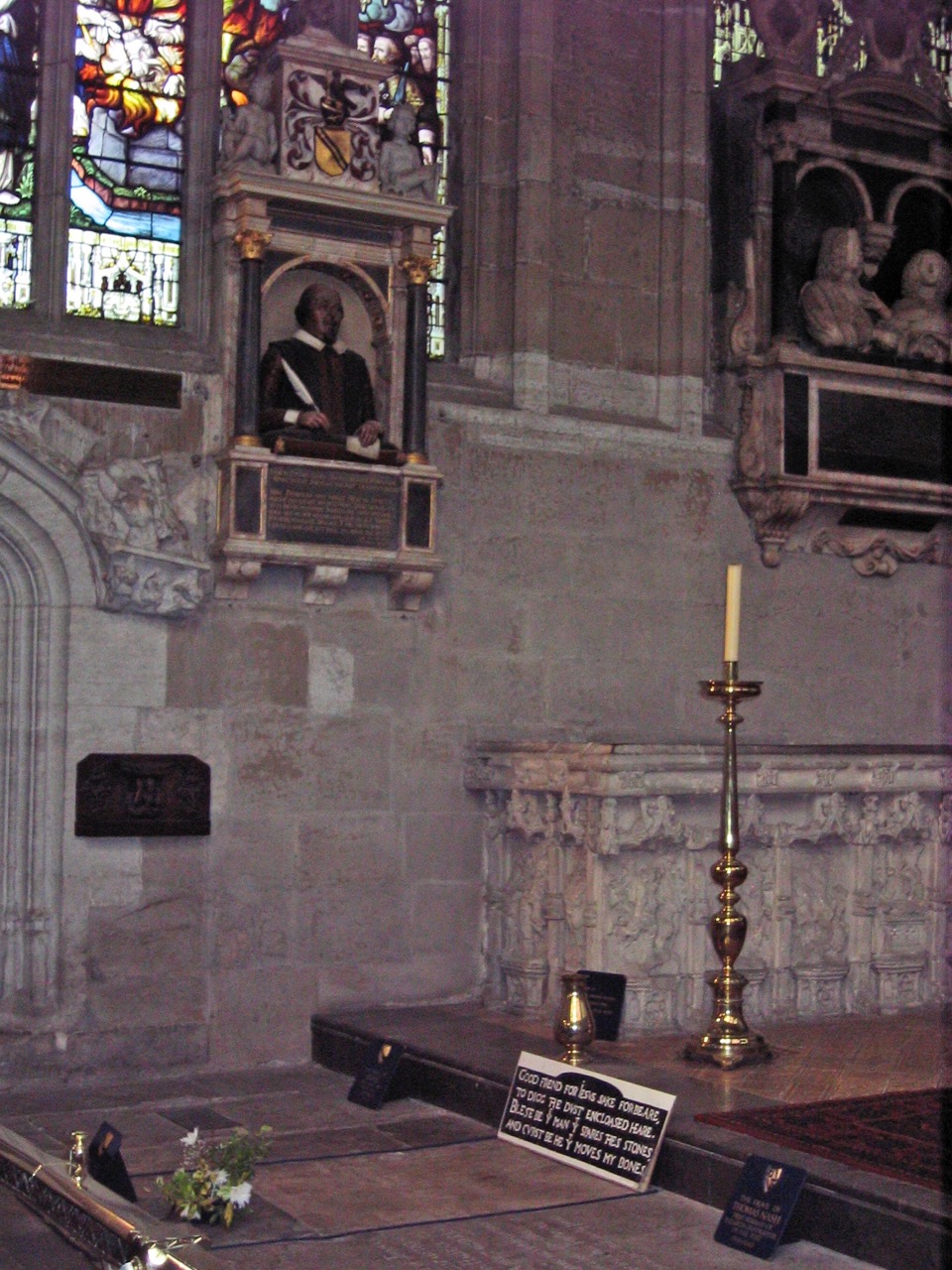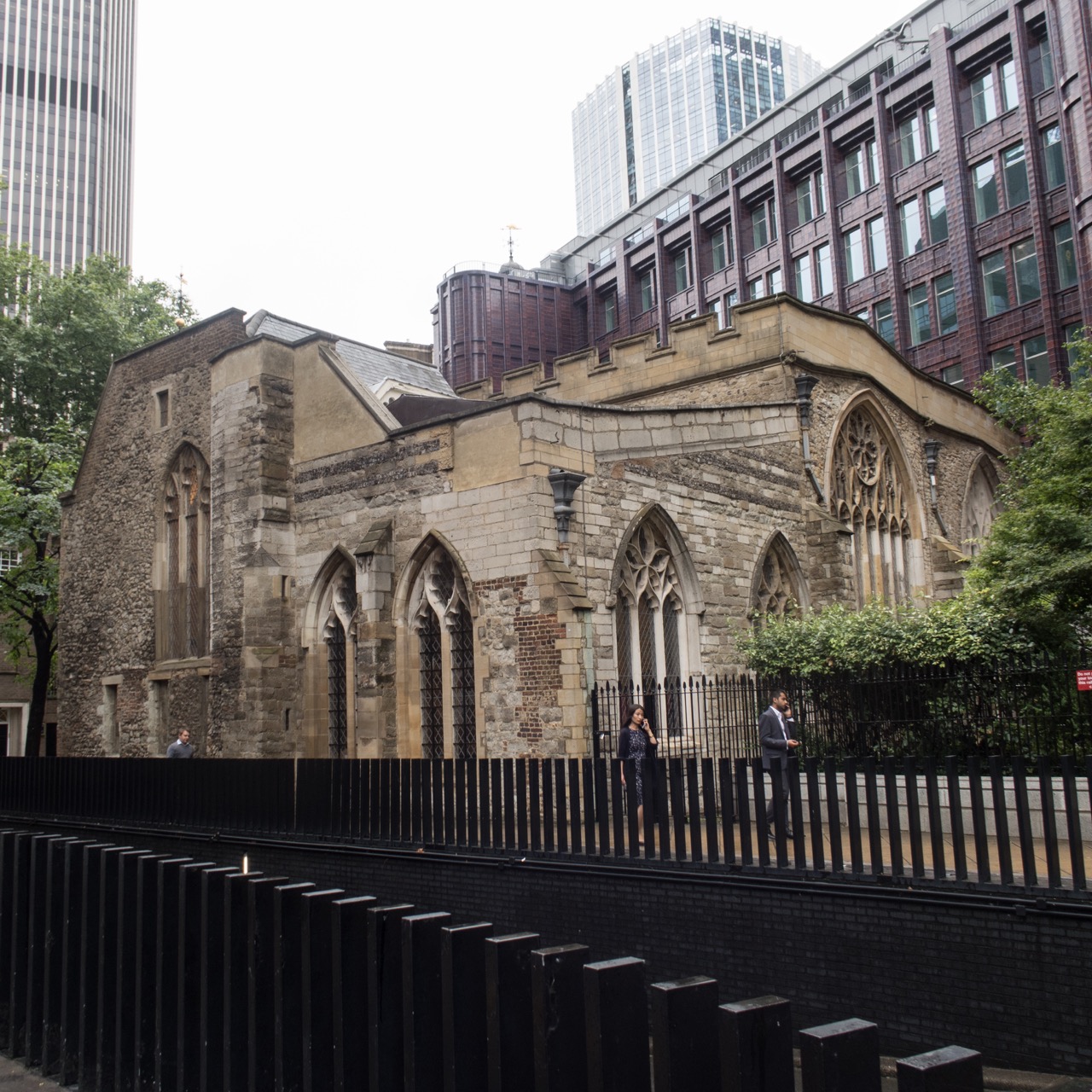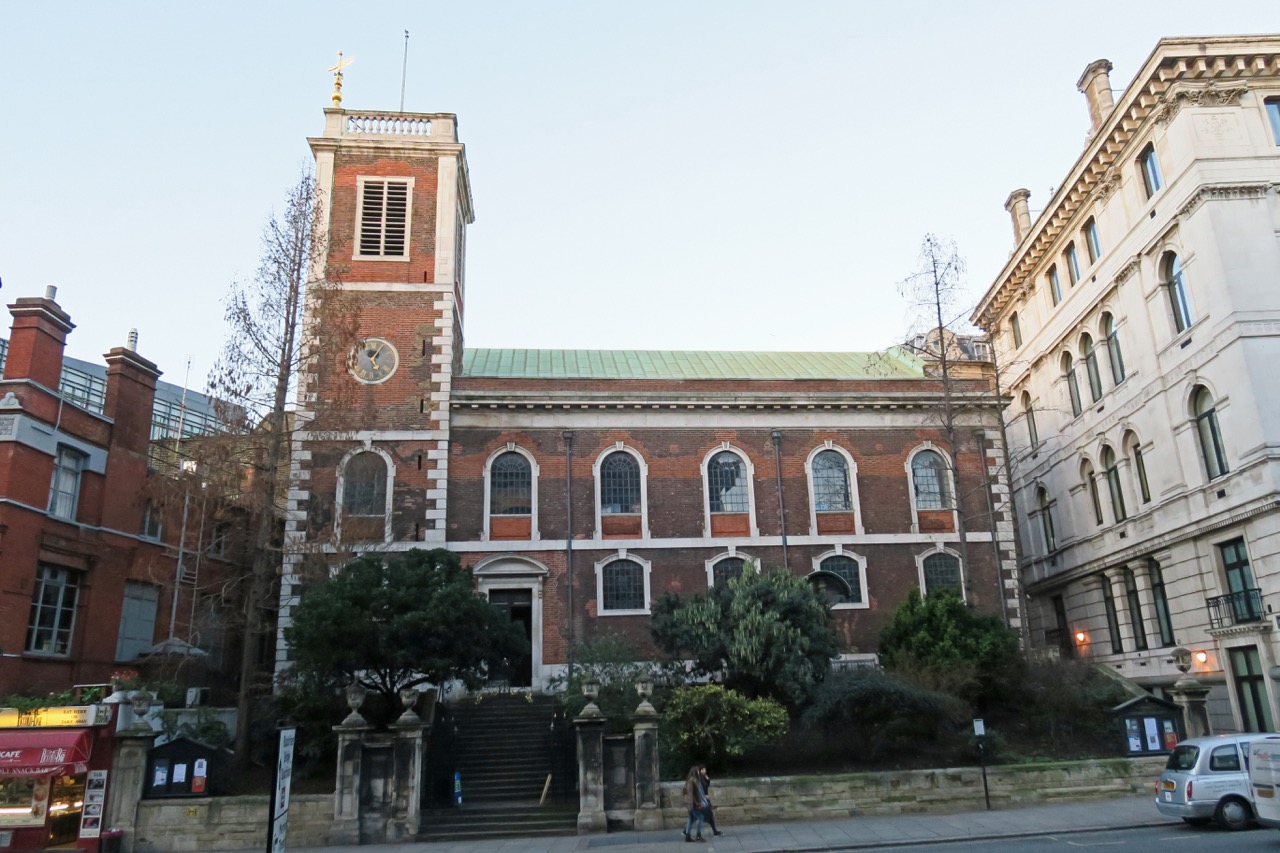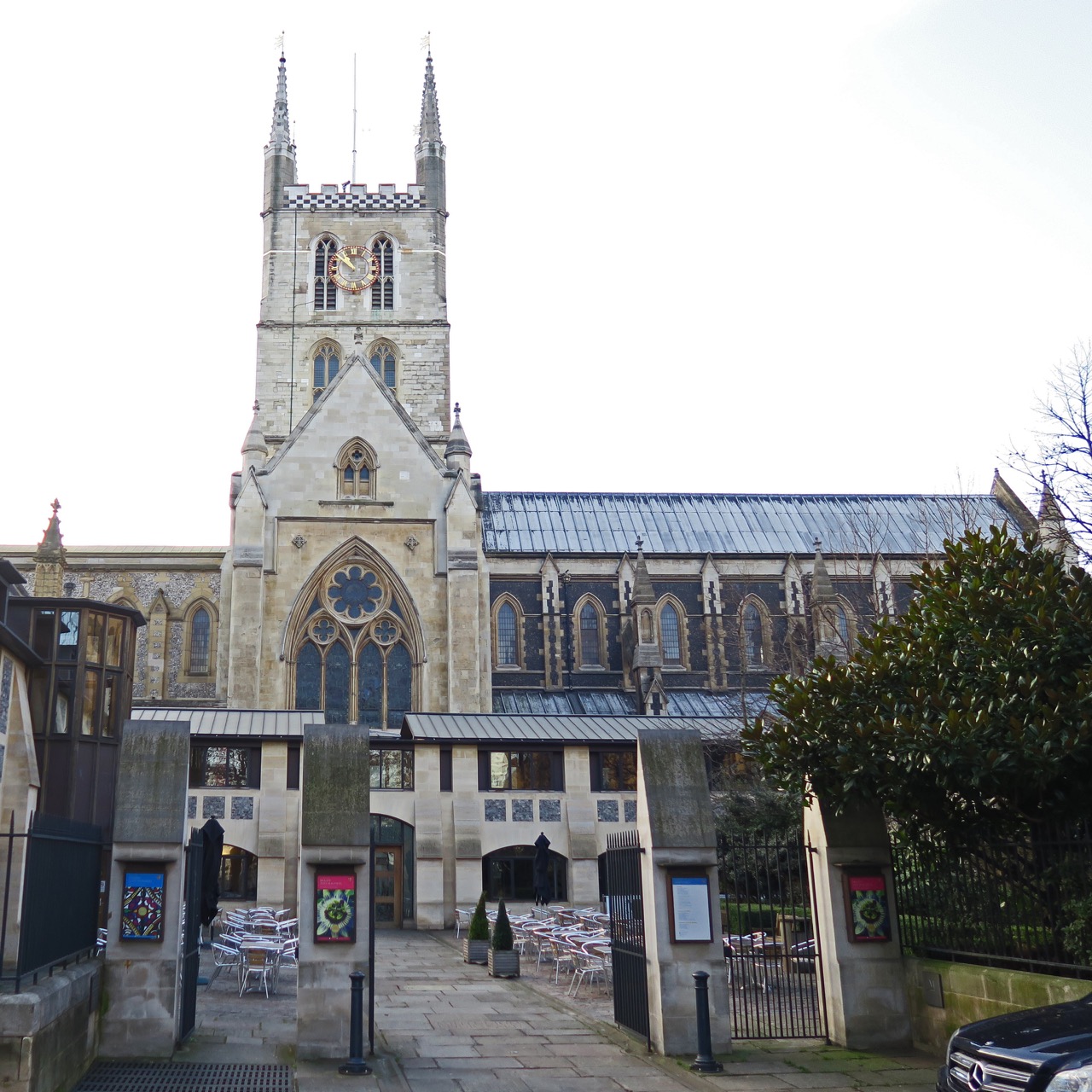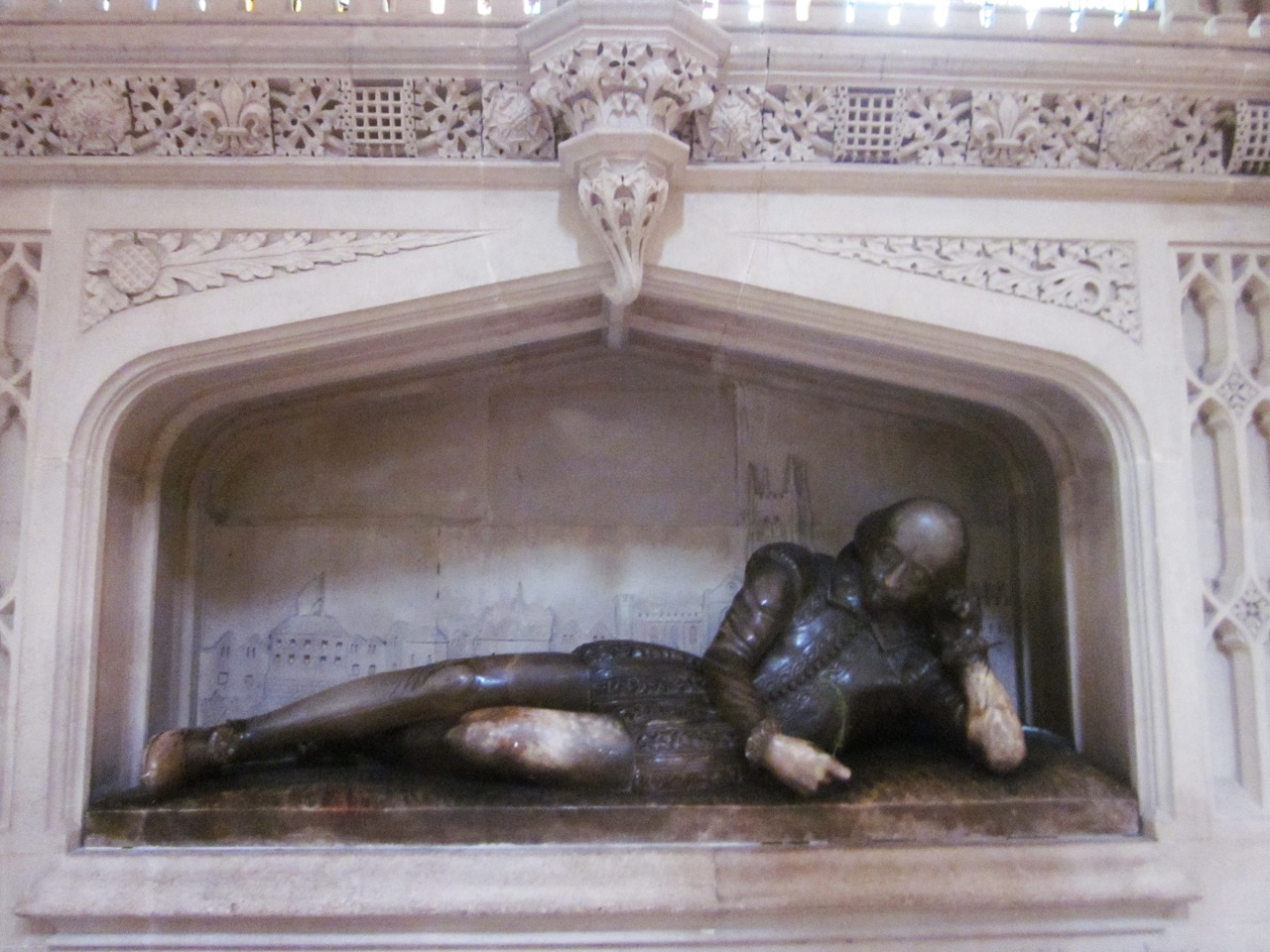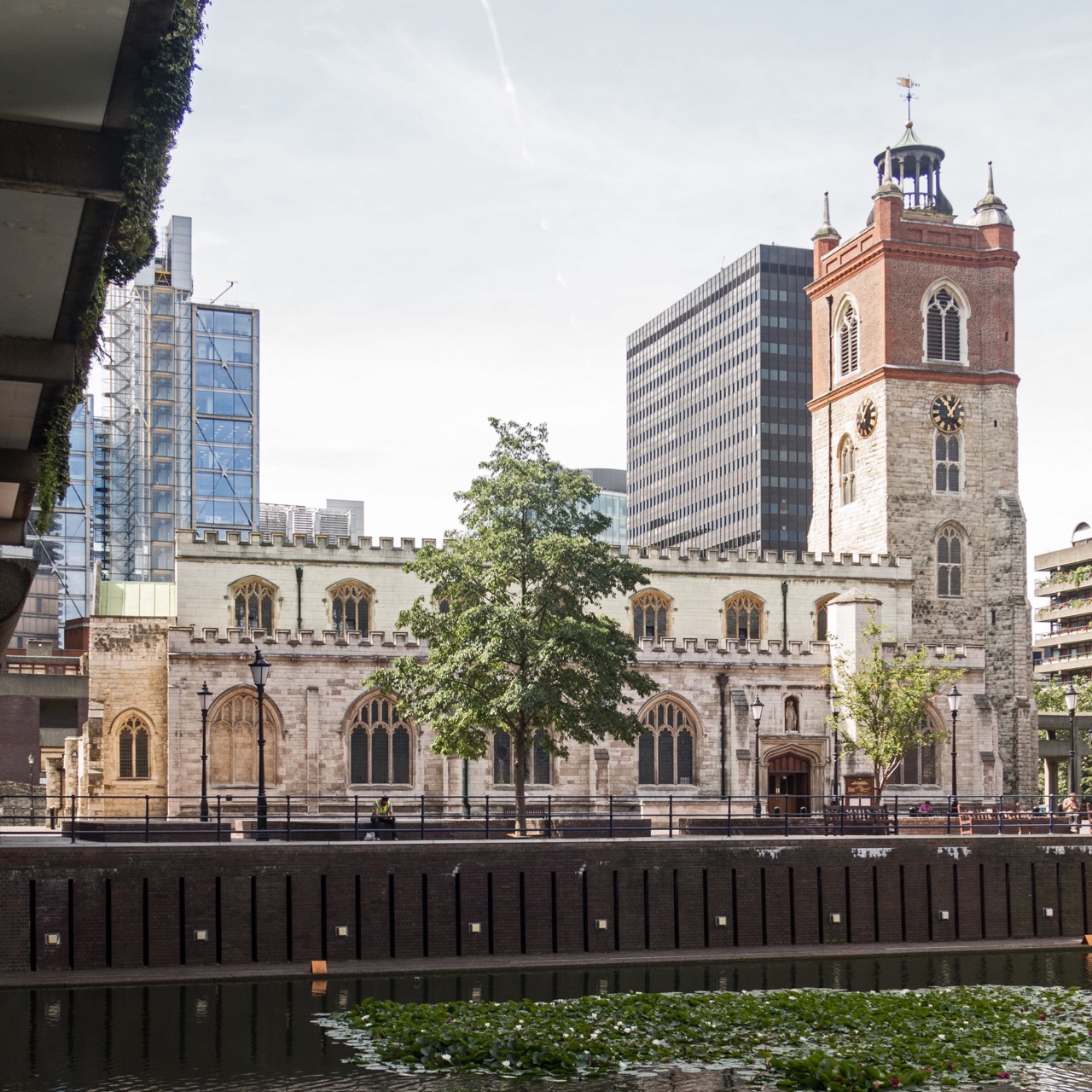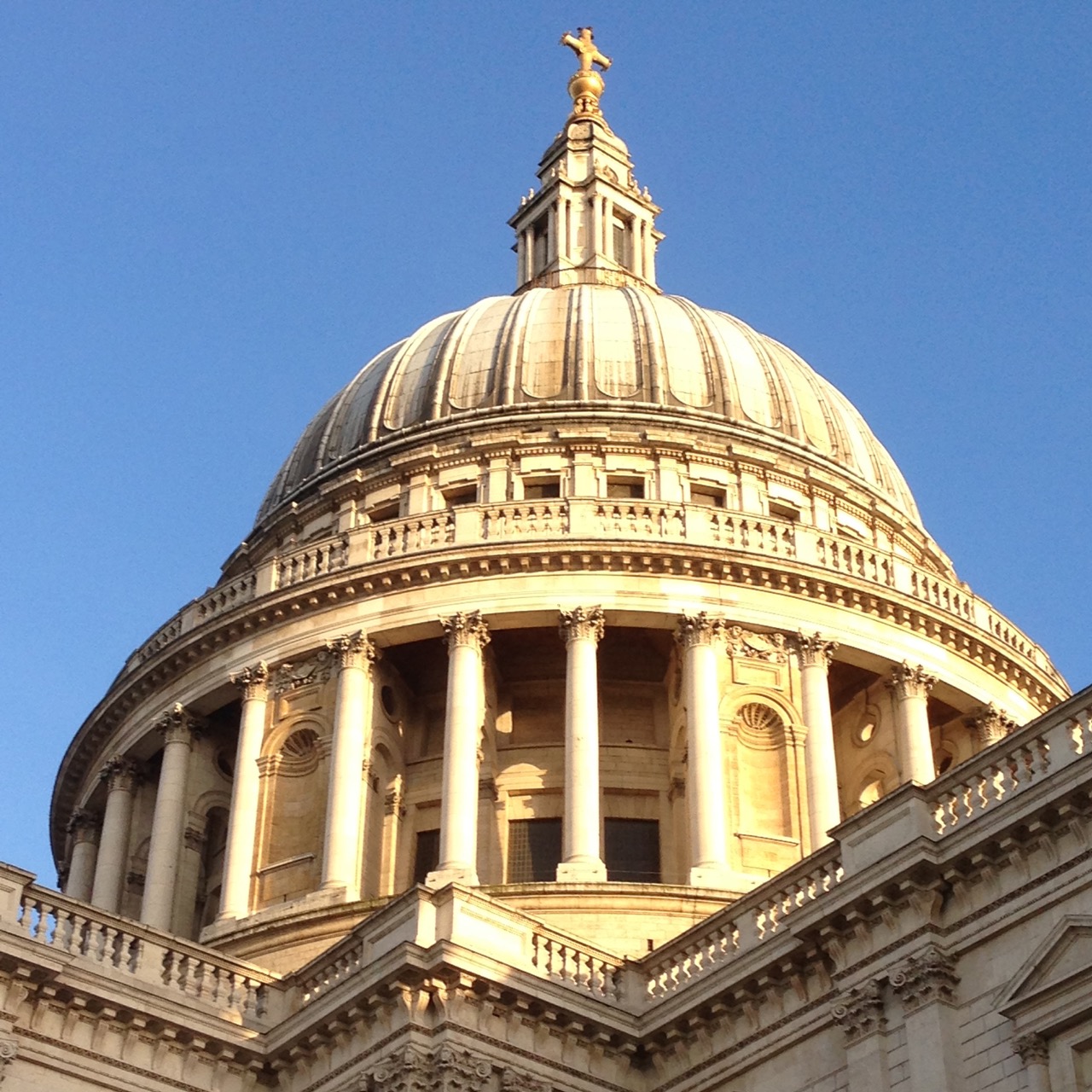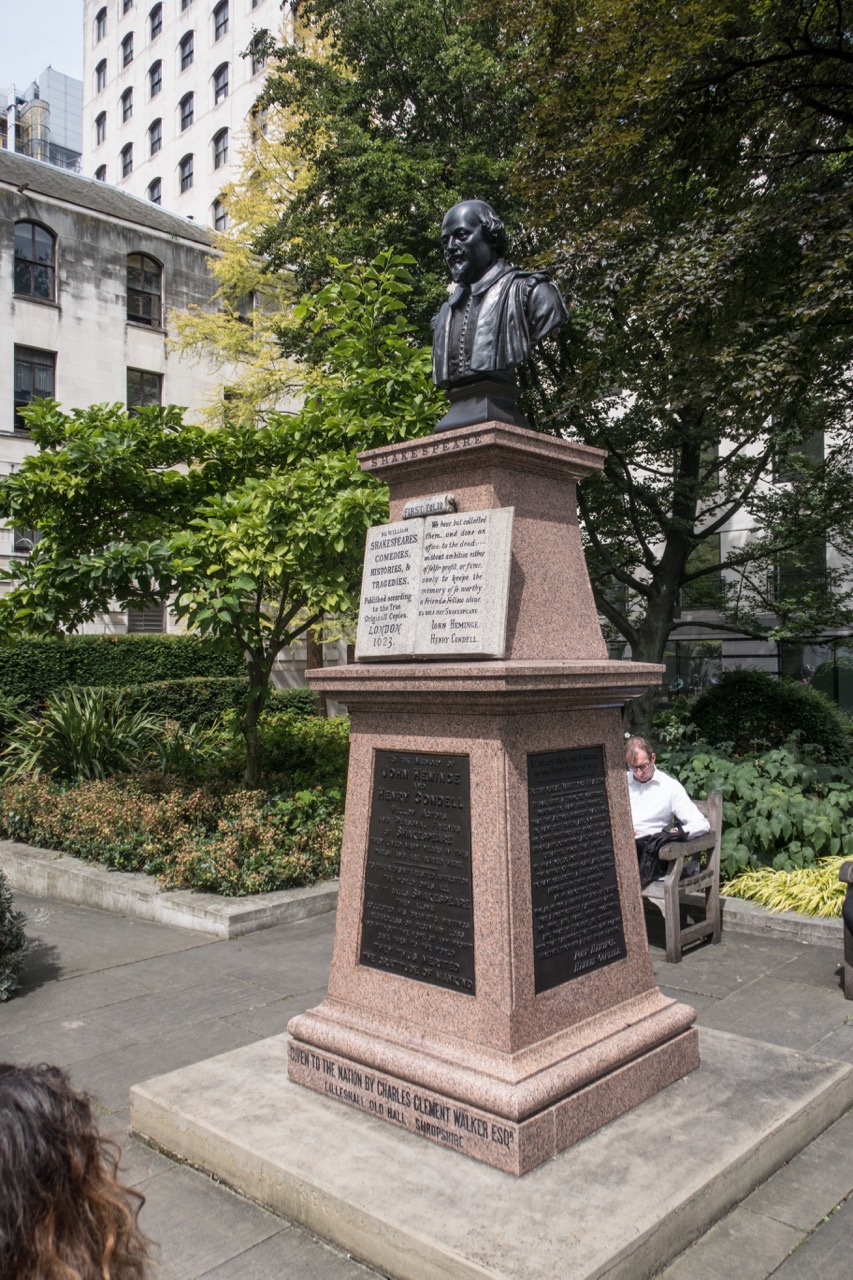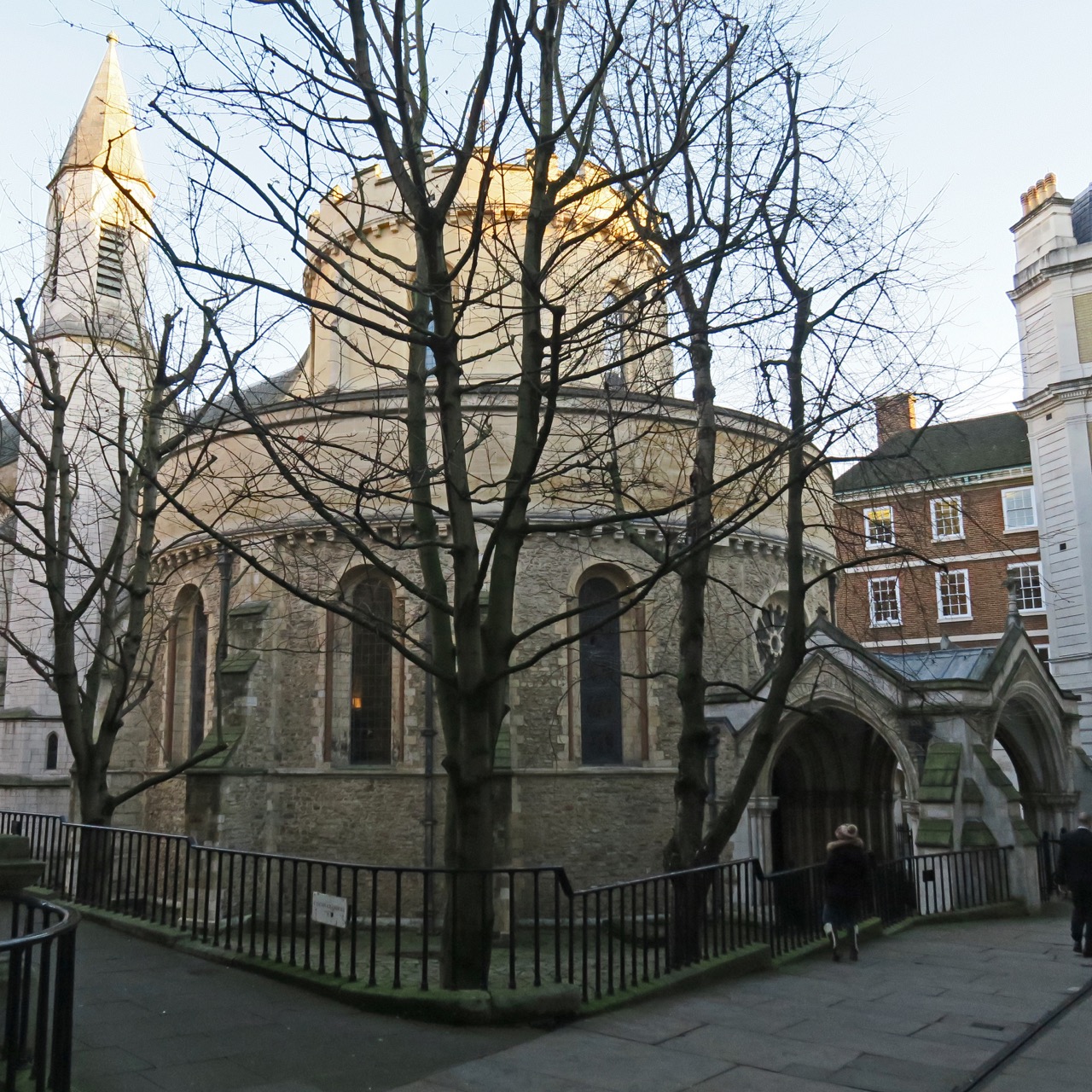Shakespeare in England and Germany
Willliam Shakespeare is more than England’s national poet and a co-creator of the English language. Although he probably never left his home island, people around the globe recognise themselves, their longings and their abysses ever anew in his works. For modern Europe they are like the Greek myths for antiquitiy, as Dietrich Schwanitz, a German writer and Anglicist, remarks (transl. TuK Bassler): They are “our cultural memory. And especially for Germany they sit at the cradle of our own modern literature. … He became even more important for us than for the British. We cannot understand ourselves without reference to Shakespeare. For us he is … a founding figure like Moses for the Jews and Aeneas for the Romans. (From these two examples it becomes obvious: Such founding figures do by logic not belong to the nations they create. Moses is an Egyptian, Aeneas a Trojan.)” A bit pointed, perhaps, but not unreasonable … certainly enough of a motivation to address Shakespeare and his churches on a German-English web site on churches.
The Church in Shakespeare’s Time
The church records of Stratford-upon-Avon give evidence that William Shakespeare was baptised on April 26th, 1564, and by this act was received into the community of the Church of England. The records do not mention his date of birth, and they do not report either on the bonds his parents had to this church, to which they brought him – a church still accused of heresy only six years before. The congregation, like all of England, had gone through great religious turbulences, and the extremes might still have been in fresh memory: Henry VIII had cut the ties with the Church in Rome, he had declared himself Head of the Church, and he had brought forward the reformation mainly as an instrument to dissolve the monasteries and to lay his hands on the wealth of the Church – a whopping third of all real property in England had then belonged to the Church. After his death in 1547 his son King Edward VI aimed to provide more theological depth to the reformation and to enforce it rigorously in the daily lives of the faithful. Martin Bucer, a reformer of Strasbourg, was appointed professor in Cambridge, the mass in Latin was abolished and replaced by the Book of Common Prayer, and the communion in both kinds was introduced. Statues, imagery and altars were removed from the churches, stained glass windows were replaced by clear glass, and wand paintings had to disappear: William’s own father John was commissioned by the town council to overpaint the Last Judgement in the guildhall chapel of Stratford-on-Avon.
But Henry’s son and heir Edward died before his time, and his Roman-Catholic halfsister Mary, daughter to Henry’s first wife Catherine of Aragon, was crowned in 1553. She violently reversed all reforms, deposed Protestant priests and bishops and sent many opponents to be burnt at the stakes – hence her byname “Bloody Mary”. Her death in turn was the final blow for England’s return to Catholicism. In 1558 – only six years before William’s baptism – her halfsister Elizabeth became Queen of England, England was Protestant again, and any sympathies for Catholicism were suspicious. These repeated disruptions of the religious framework and of everything that should have given meaning, support and orientation for the individual left their traces. The first generation to watch Hamlet on stage never had known the security and stability of their ancestors’ faith.
Shakespeare in Stratford-upon-Avon
Such were the times into which William Shakespeare was born. Today we commemorate his birthday on April 23rd – a doubly important date, which moreover has the advantage of not being more improbable historically than the days therebefore or thereafter. Firstly, April 23rd is the day of the English patron St George, and secondly, Shakespeare died exactly on this day 52 years later, again in Stratford-upon-Avon. He was baptised and confirmed in Stratford’s Holy Trinity Church according to the agenda of the Book of Common Prayer, which he should rework later as a 40-year-old together with others in Hampton Court. In Stratford he attended the school of Latin, where one of his and his mates’ first tasks was to translate the psalms and the Book of Provers into Latin – maybe this is why the Psalter is the part of the Bible, to which Shakespeare alludes most.
Catholicism in Shakespeare’s Family?
Whereas the influences of biblical and liturgical texts on Shakespeare’s works are undeniable, we cannot say with certainty, which influence his family had on his relationship with the Church, nor what his personal beliefs were. During the 18th century a document was presented, which testified that William’s father John was a crypto-Catholic (a clandestine supporter of Roman Catholicism): a so-called “Spiritual Testament”, which was circulated by the Jesuite order in the 1580s. This document was meant as a sort of “insurance policy” for Catholic souls in case they should suddenly be confronted with death without an opportunity to receive the Catholic death sacraments, to repent their sins and to be absolved. Thereby a prolonged time in the Purgatory, where the unabsolved sins are burned away, should be avoided. Consequentally, the relatives of the Catholic signee were asked to ”help and support by pious prayers and works of atonement, especially by the holy sacrifice of Communion” (Greenblatt, transl. TuK Bassler) – which was strictly forbidden, since Elizabeth (not unjustly) feared coups d’état and terroristic attacks motivated by Catholicism.
However, the authenticity of this ”Spiritual Testament” could never be firmly established, and it is not known, whether William knew of such a testament, or whether he harboured similar beliefs. Against the theory of crypto-Catholic sympathies stands the fact, that by the end of 1582 he had married Anne Hathaway (he was 18 then, she 26 and pregnant – not unusual for the time), because Anne’s relatives were ardent supporters of the Church of England: Her brother and his sons volunteered as church wardens. The couple’s first child, Susanna, as well as the twins Judith and Hamnet (born in 1585) were baptised in the Holy Trinity Church in Stratford-upon-Avon. William never severed his ties with Stratford. His parents lived there, as did his wife and his children (under the same roof for many years, as it were), and it was there that he bought property – even if he only returned to Stratford towards the end of his life.
Shakespeare Churches in London
Shakespeare spent the best time of his life in London, and many churches there claim some kind of association with him:
St Helen’s Bishopgate was William Shakespeare’s parish church during the 1590s, and he attended the services there regularly, if for no other reason, then because attendance was mandatory as everywhere in England.
William Shakespeare owned a house in the parish of St Andrew by the Wardrobe, too. A monument in the church remembers this.
Southwark Cathedral – at the time of Shakespeare still called St Mary Overy (“over the river”) – was the parish church for Shakespeare’s brother Edmund, who was buried here in 1607. The current cathedral has a Shakespeare monument under a Shakespeare memorial window – both dating from the 20th century. Next to these a monument remembers Sam Wanamaker, who rebuilt the Globe Theatre close to the cathedral in the 1990s.
Near St Giles without Cripplegate Shakespeare lived with the Huguenot family Mountjoy in the early 17th century. His brother’s two sons were baptised in this church.
St Paul’s Cathedral stood right in the centre of London’s book trade: This is where Shakespeare would have bought the books he used as sources, and here the first editions of his works were sold.
St Mary Aldermanbury was the parish church for Henry Condell and John Heminge. The two actors, colleagues and friends to Shakespeare, published the First Folio edition of his works seven years after his death. They both are buried in the adjacent cemetery. Today the garden around the ruined church includes a monument for them, crowned by a Shakespeare bust.
The first recorded performance of Twelfth Night happened on February 2nd, 1602, in the Middle Temple Hall next to Temple Church.
Hamlet between Catholicism and Protestantism
But it is another play – premiered at the Globe Theatre – that illustrates best how Shakespeare dealt with the religious confessions and conflicts of his time: Hamlet. The author must still have been shaken by his son’s death, who passed away in 1596 aged 11. The doomed hero of his tragedy, which was created in 1600, bears his name (at the time, there was no orthographical distinction between “Hamnet” and “Hamlet”). Furthermore, during the writing of Hamlet he received notice that his father in Stratford had fallen seriously ill. So at the same time William remembered his son’s death and anticipated his father’s death – “Looking before and after” (4.4.37) – in a year 1600, which took stock of the old century, in which the conflict between the religions gathered pace, and looked ahead to the new century, in which for England loomed the foreseeable and dreaded problem of the succession to the childless Elizabeth.
While Catholics and Protestants were battling for supremacy in the country, Shakespeare wrote about a father, whose ghost attempts out of the – Catholic – Purgatory to direct the fate of his son, who studies in – Protestant – Wittenberg in Germany. The ghost went through what Catholics fear most, and against what the Jesuit “Spiritual Testament” was meant to protect: He departed life unexpectedly, without having been able to reduce the load of his sins by repentance and the administration of the last rites. Now in the Purgatory he pays the full price – but he does not ask for saying masses, he demands revenge!
According to Protestant teaching there are no ghosts of the deceased, as there is no Purgatory. The living are therefore bereaved of every contact, every influence on the fate of the dead. Initially convinced and overwhelmed by his father’s appearance he soon begins to doubt that the ghost might be the devil’s doing, who tries to incite him to acts, which will ultimately bring about his destruction. By staging a play within the play he searches for an independent confirmation of his father’s claims, but this attempt also fails to save him from the mad vicious circle of deference, self-reproach, non-intervention and renewed self-reproaches, into which his father’s ghost threw him.
Without support and comfort from the old, interested in, but not yet at ease with the new, Hamlet pinpoints the religious uncertainty and confusion of his time: “The time is out of joint” (1.5.188).
Sources and Further Reading
William Shakespeare: Hamlet, Band 1, Englisch/Deutsch, edited, translated and commented by Holger M. Klein, Stuttgart 1984.
Jonathan Bate & Dora Thornton: Shakespeare. Staging the World, London 2012.
City of London: City Walk – Shakespeare's London.
Stephen Greenblatt: Will in der Welt. Wie Shakespeare zu Shakespeare wurde, Berlin 2004.
Neil MacGregor: Shakespeare's Restless World, London 2012.
Lois Potter: The Life of William Shakespeare. A Critical Biography, Chichester 2012.
Dietrich Schwanitz: Shakespeares Hamlet und alles, was ihn für uns zum kulturellen Gedächtnis macht, Frankfurt 2006.
Daniel Swift: Shakespeare's Common Prayers. The Book of Common Prayer and the Elizabethan Age, Oxford 2013.

